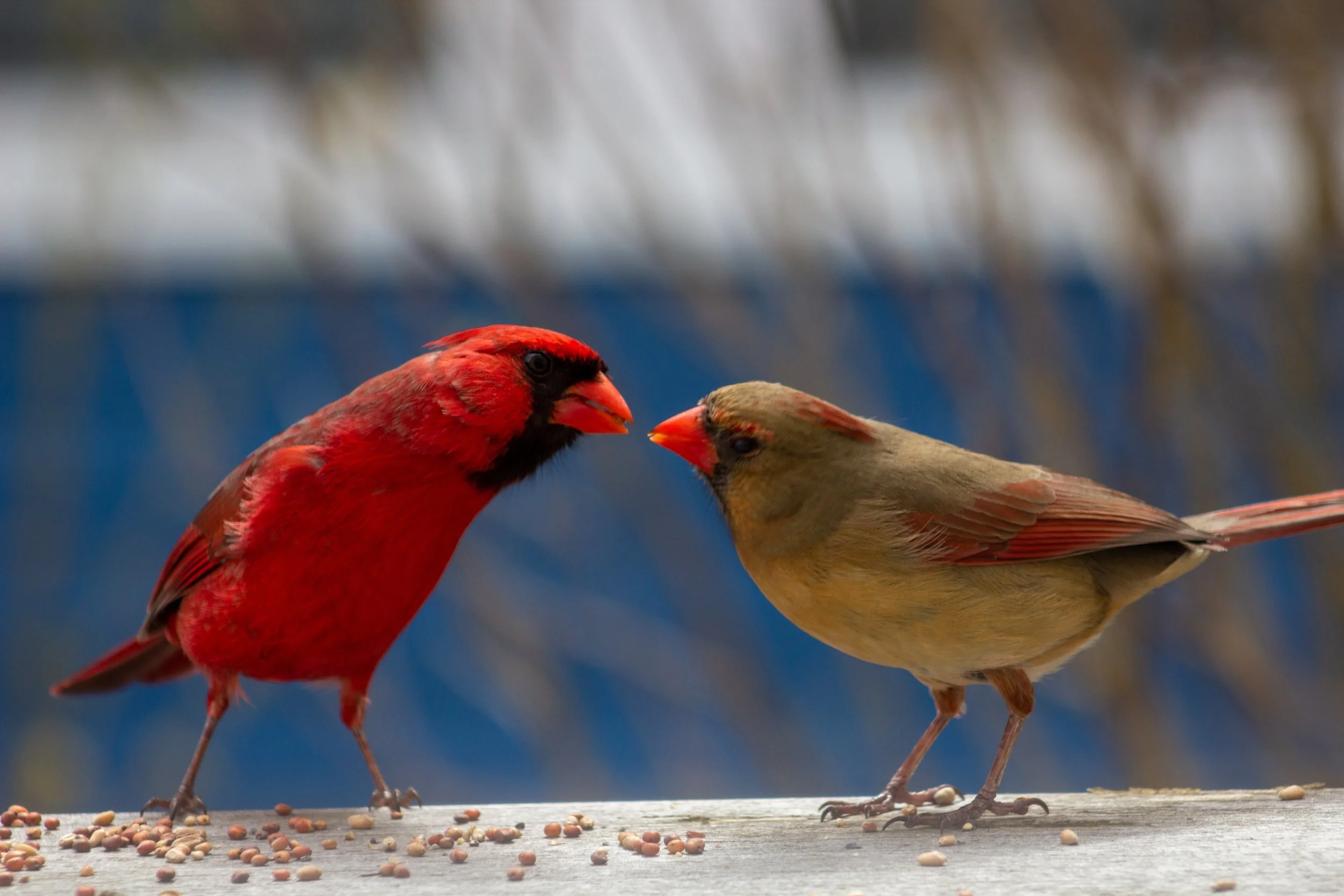Love is in the Air
By Marilyn Shy, Kalkaska Conservation District
Have you ever seen a “Cardinal kiss?” Have you ever watched a crane “dance?”
The answers to these and other animal romance-related questions depends upon how much of a bird nerd you really are.
I watch birds in all seasons. Their behavior is always fascinating to me, if indeed a little puzzling. And since February is the month when a young couple’s fancy turns to thoughts of hearts and flowers (for after all it is the month of Valentine’s Day) it is a good time to try and get to the bottom of what our animal friends are up to at this time of year.
Birds’ mating behavior is quite variable across the many species that exist in the world, even those in our own backyard. Although a few bird species are reported to mate for life, including eagles, mute swans, Canada geese, cranes and several others, many do not. However, you can find reports of many bird species that are monogamous. But a bird’s definition of monogamous behavior is somewhat different than what we as humans expect it to be.
Many bird species, including cardinals and blue jays, are thought to be what is termed “socially monogamous”. At a basic level, this means that a male and a female bird will form a pair bond. The term refers mostly to the male bird’s role in parenting. He will defend a nest and territory, feed his incubating mate, and bring food to nestlings (baby birds just hatched and still in the nest) and fledglings (young birds out of the nest but still not able to find food for themselves).
However, socially monogamous birds are not necessarily faithful partners. In genetic studies of eggs in a nest, not all were found to have the same 2 parents. Thus, someone along the way was having “extra-curricular” activities. This is not at all uncommon, and leads to many half-siblings in the nest.
For cardinals, their pair bonding begins in early spring. Males begin with a mating dance. He shows off his brilliant red feathers to a prospective mate, swaying from side to side while singing a soft song. If the female is receptive, he will bring her food and feed her. This behavior looks like a kiss to humans as their beaks touch, and thus it is referred to as the “Cardinal kiss.”
Sandhill cranes are believed to mate for life. When they form a pair bond, it generally lasts for years until one of the cranes die. After a mate passes away, the surviving crane will seek out a new mate. In the early spring, as the cranes are migrating to their breeding grounds, singles start pairing up. Their loudest and most noticeable calls are made during the mating season. Males and females perform a unison call to create a pair bond.
During mating, the cranes perform dancing displays. Although the dancing is most common during the breeding season, cranes dance all year long. Displaying birds stretch their wings, pump their heads, bow and leap about. They may also throw a stick or plants into the air. Unpaired cranes choose their mates based on the dance moves of their prospective partners.
Once paired off, the cranes mate and build a nest on the ground. They often have 2 eggs. The pair takes care of the nest together with the male often standing guard against predators. It takes about a month for the eggs to hatch, and about two months before the chicks, called colts, become independent. In the fall, the juvenile cranes migrate south with their parents. After 2 years, the juvenile cranes reach sexual maturity and begin the search to find their own mates. And thus the cycle begins all over again.
Cranes and cardinals have intrigued me for years. They are well worth taking the extra time at your bird feeder, or in the marsh, to observe their romantic interludes. It’s a great activity as we anticipate the spring thaw, and our winter season begins to very slowly morph into spring!





